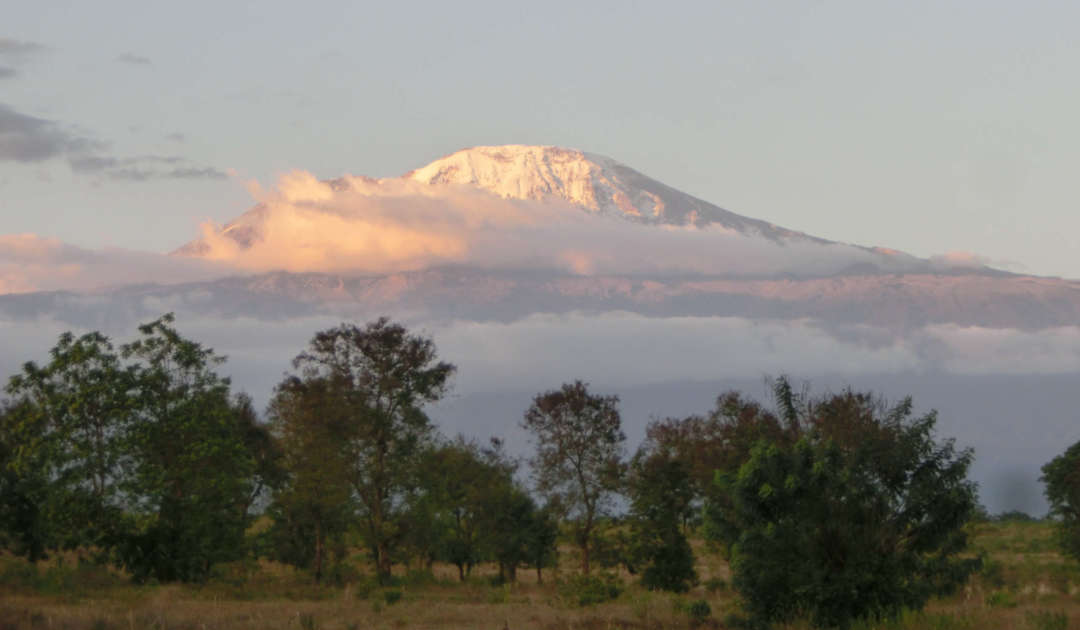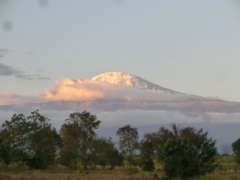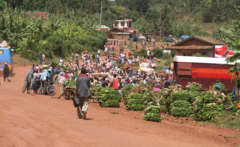Tangled relationships: A new large-scale project studies nature’s value for Humans
What do humans expect from nature; what services can nature offer; and how do humans change nature? These questions are the focus of a new research project at Mt. Kilimanjaro, which involves natural and social scientists from fifteen universities and research institutes in Germany, Switzerland, and Tanzania. The scientists hope that their findings will contribute to a more sustainable use of East Africa’s unique ecosystems. The joint project is coordinated by the Senckenberg Gesellschaft für Naturforschung and funded by the German Research Association with 7.3 million Euros.
The relationship between humans and nature appears to be on the wrong path: While we humans profit from nature and its services in numerous ways, we simultaneously destroy this basis of our lives with our actions. How can we change this relationship and effect a turnaround toward a sustainable use of nature? The new large-scale project entitled “Nature’s role for human well-being in the social-economic system at Kilimanjaro” is intended to provide answers to these questions.
Beginning in the fall of 2020, in the context of this fundamental socio-economic research project, the scientists will examine the interactions and reciprocal interferences between humans and nature at the East African mountain. The project focusses on the services provided by the local ecosystems to the 1.2 million people who live at Mt. Kilimanjaro. For example, nature supplies food, raw materials, and medications, regulates the climate, affects the water supply, and creates spiritual refuges.
“In our project, we study which of nature’s services are important to the residents, and why? What services can nature provide, and what biological diversity is behind these services? What institutions and political regulations determine how humans use nature? And are there conflicts of use, or synergies?” explains the project leader, Prof. Dr. Katrin Böhning-Gaese of the German Senckenberg Biodiversity and Climate Research Center and the Goethe University in Frankfurt.
To this end, the group of researchers will initially record all regulatory, material and immaterial ecosystem services at Kilimanjaro and determine the value of nature both as a means to an end as well as in itself for the different population groups. The team can make use of the data from previous projects, since the unique nature at Mt. Kilimanjaro has been studied for decades.
In the context of this project, Böhning-Gaese and her team of biologists, hydrologists, economists, political scientists, and other social scientists rely on a wide variety of different methods and scales. “For example, one team will record the types of land use from a helicopter, while other teams will question individual residents regarding their personal attitude toward nature,” explains Böhning-Gaese in an attempt to illustrate the wide range of approaches.
Ultimately, a synthesis of these and other individual projects is meant to create a detailed overall picture that shows which natural and social components affect life at Kilimanjaro, how these are interconnected, and – perhaps the most important question – what are the driving forces behind changes. This may lead to recommendations for action.
“We attempt to not only understand the interwoven relations between humans and nature at Kilimanjaro but also provide the basis for decisions that locally further a sustainable development. With its large number of different ecosystems in close vicinity to each other and socially diverse population groups, Kilimanjaro is like a microcosm. With our project, we cover a wide range of social and ecological factors. Therefore, I believe that our findings will also be relevant for other parts of Africa and the world,” says Böhning-Gaese.
The project is coordinated by the Senckenberg Gesellschaft für Naturforschung, with participation of scientists from the Goethe University in Frankfurt, the University of Bayreuth, the Justus-Liebig University in Giessen, the University of Kiel, the Institute Of Global Economy in Kiel, the University of Kassel, the University of Marburg, the University of Bern, and other institutions. Moreover, the team cooperates with partners in Tanzania and supports the education of additional experts on site. The German Research Association (DFG) supports the project, which is initially designed for a duration of four years, with a total of 7.3 million Euros. This is the DFG’s first socio-economic research group.


